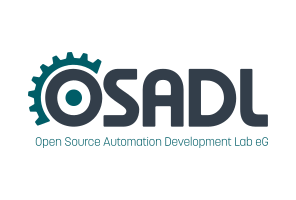Dates and Events:
|
OSADL Articles:
2023-11-12 12:00
Open Source License Obligations Checklists even better nowImport the checklists to other tools, create context diffs and merged lists
2022-07-11 12:00
Call for participation in phase #4 of Open Source OPC UA open62541 support projectLetter of Intent fulfills wish list from recent survey
2022-01-13 12:00
Phase #3 of OSADL project on OPC UA PubSub over TSN successfully completedAnother important milestone on the way to interoperable Open Source real-time Ethernet has been reached
2021-02-09 12:00
Open Source OPC UA PubSub over TSN project phase #3 launchedLetter of Intent with call for participation is now available |
Real Time Linux Workshops
1999 - 2000 - 2001 - 2002 - 2003 - 2004 - 2005 - 2006 - 2007 - 2008 - 2009 - 2010 - 2011 - 2012 - 2013 - 2014 - 2015
14th Real Time Linux Workshop, October 18 to 20, 2012 at the Department of Computer Science, University of North Carolina at Chapel Hill
Announcement - Call for papers (ASCII) - Hotels - Directions - Agenda - Paper Abstracts - Presentations - Registration - Abstract Submission - Sponsors - Gallery
Linux porting to the XtratuM Hypervisor for x86 processors
Jordi Sánchez, Instituto de Automatica e Informatica Industrial, Universidad Politecnica de Valencia, Spain
Salva Peiró, Instituto de Automatica e Informatica Industrial, Universidad Politecnica de Valencia, Spain
Miguel Masmano, Instituto de Automatica e Informatica Industrial, Universidad Politecnica de Valencia, Spain
José Simó, Instituto de Automatica e Informatica Industrial, Universidad Politecnica de Valencia, Spain
Patricia Balbastre, Instituto de Automatica e Informatica Industrial, Universidad Politecnica de Valencia, Spain
Partitioned software architectures represent the future of secure systems. They have evolved to fulfill security and avionics requirements where predictability is extremely important. The idea behind a partitioned system is the virtualization. A virtual machine (VM) is a software implementation of a machine that executes programs like a real machine. A Hypervisor is a layer of software that enables to run several independent execution environments or partitions in a single computer.
There exists several virtualization solutions targeting specific application needs ranging from general purpose virtualization to embedded systems virtualization, one of them is the XtratuM hypervisor. XtratuM is an open source hypervisor specially designed for real-time embedded systems. It provides a framework to run several operating systems in a robust partitioned environment ensuring strong temporal and spatial isolation properties.
In this paper we present the porting of the Linux general purpose operating system (GPOS) to be run on top of the XtratuM hypervisor. The paper discusses in detail the challenges that have been overcome to run Linux as a XtratuM partition, focusing on solving the memory and device management and initialization process issues that appear when running Linux GPOS under the strong isolation provided by the XtratuM Hypervisor. This development enables XtratuM to be used in a large variety of fields and widens the scope of application of this hypervisor to more generic systems with softer real-time constraints.




